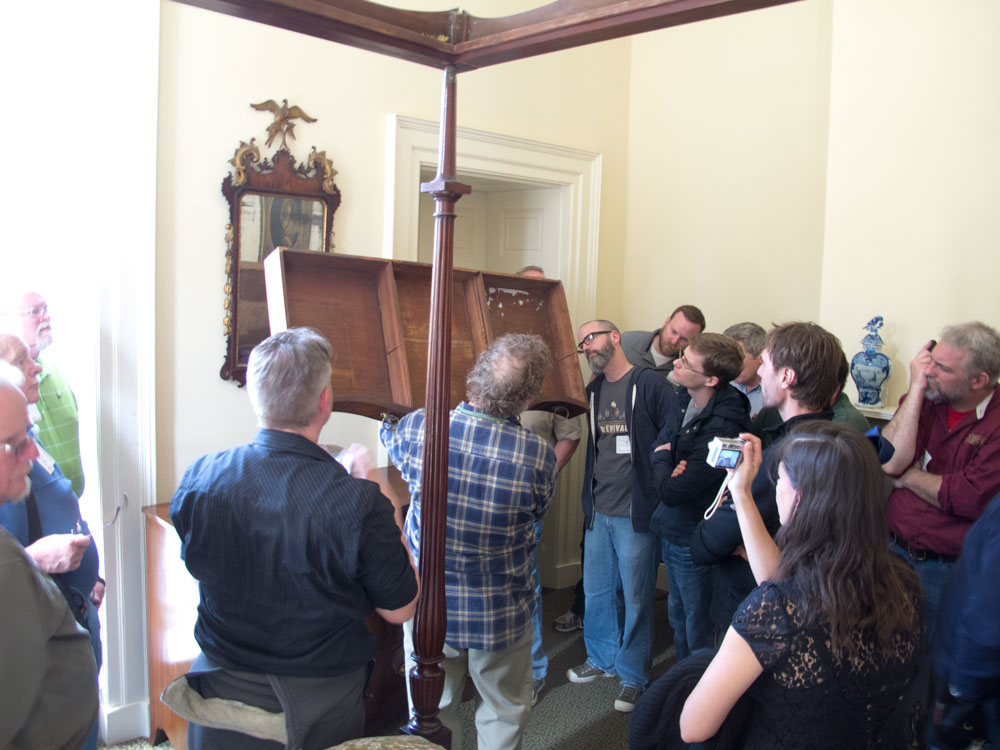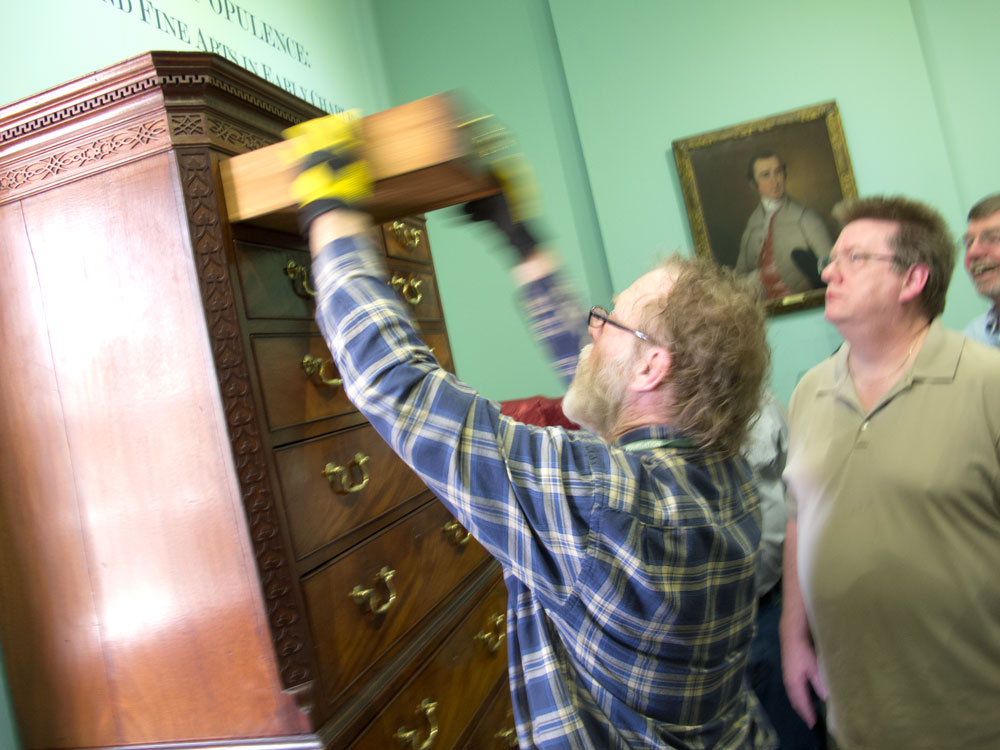We may receive a commission when you use our affiliate links. However, this does not impact our recommendations.
The furniture history of Charleston, S.C., is both glorious and a bit sad. The city’s astonishing wealth fueled a top-tier level of craftsmanship before the Civil War. As the city fell on hard times, a lot of its furniture record was trucked away to other cities, losing its provenance and connection to the Holy City.
On Thursday, a group of about 20 furniture-makers received a pull-out-the-drawers tour of the collection held by the Nathaniel Russell house museum, one of the jewels of city. The tour was led by Brandy Culp, a curator at the museum who specializes in interiors, and Russell Buskirk, a furniture maker, restorer and conservator who has worked on many pieces in the museum.
In addition to discussing the forms and decorative details common to Charleston furniture, Buskirk also noted some of the construction details of Charleston items that were surprising for the period.
Because of the city’s wealth, and perhaps some of its German-trained cabinet-makers, much of Charleston’s furniture is finished to a high level both inside and out. It is rare to find any saw-blade marks anywhere on the furniture, including case backs and drawer bottoms. Even surfaces that would never be seen – the undersides of dust panels, for example – would be planed clean.
Drawer sides were thicker – 9/16” – than typical in other cities. And interior panels would be full-thickness instead of thinner than the surrounding frame.
Many drawer bottoms had an interior muntin that was dovetailed into the drawer frame to add support.
And to demonstrate his points, Buskirk pulled out drawer after drawer.
The tour was fantastic. If you are ever in Charleston, be sure to pay the extra for the curatorial tour and let them know you are a furniture maker.
And if you live in Georgia or the Carolinas, skip work today and visit us at the Lie-Nielsen Hand Tool Event, which is taking place today and tomorrow. We’re at the old city jail.
— Christopher Schwarz
If you want to learn more about Charleston furniture, pick up a copy of “Furniture In the Southern Style” by Robert W. Lang and Glen D. Huey.
Here are some supplies and tools we find essential in our everyday work around the shop. We may receive a commission from sales referred by our links; however, we have carefully selected these products for their usefulness and quality.










Thanks for the tour, Chris. I’ve always loved the special things about Charleston.
And I thoroughly enjoyed your current interview on Highland Woodworker. Great from-the-heart piece about the legacy you’re trying to leave behind. BRAVO !!! I feel that I know you better after watching it.
Try lunch at Magnolias ….
No financial interest – blah, blah